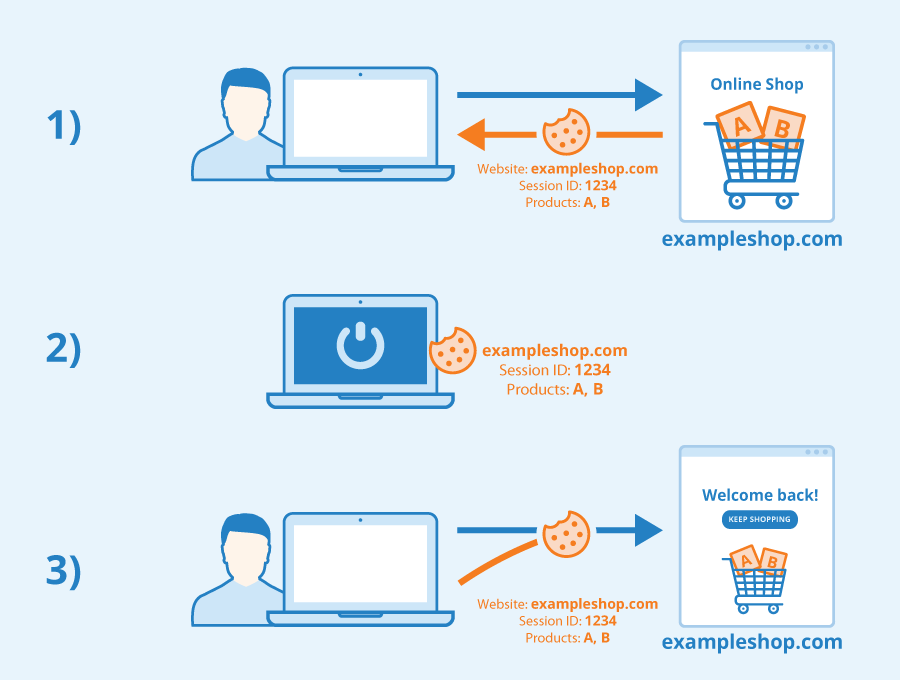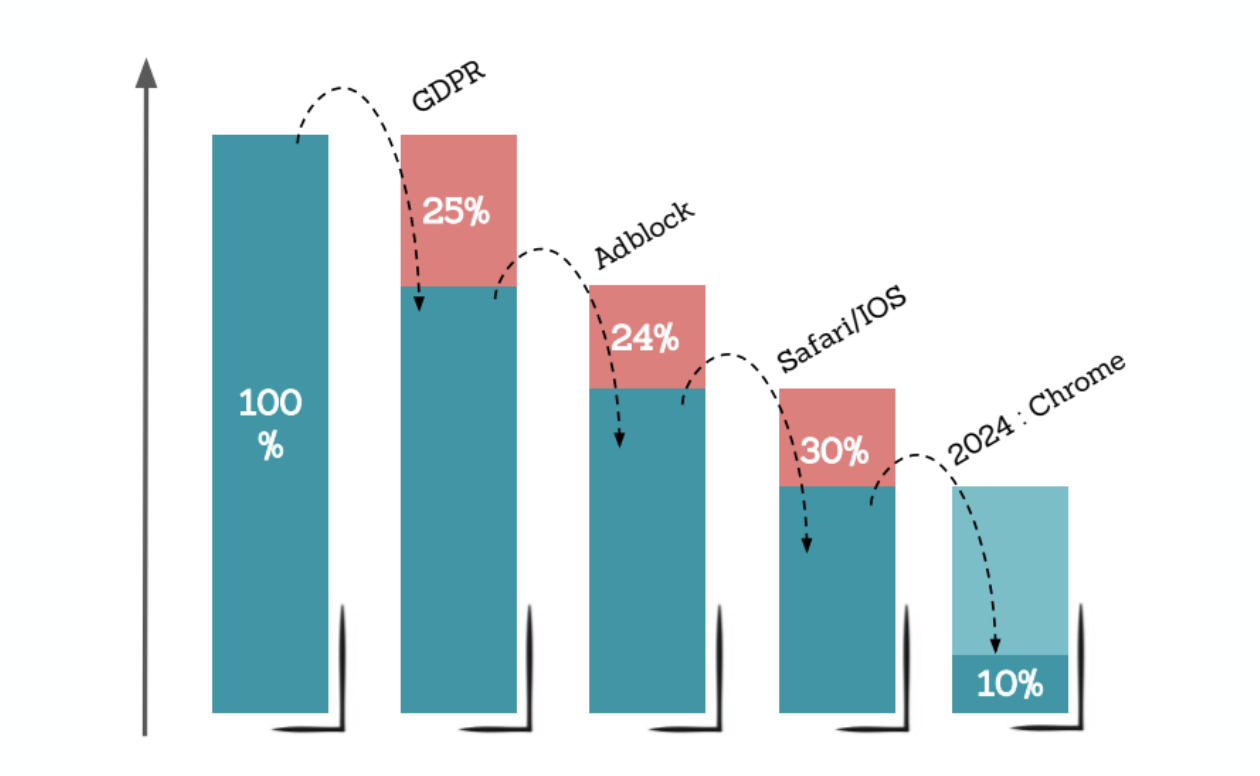
Understanding third-party cookies and adapting to changes
3min • Last updated on Jun 5, 2025

Aïda Mansour
Operation Manager
The restrictions on third-party cookies has been a hot topic in the digital marketing world, with many wondering how it will impact digital acquisition performance. In this article, we will take a closer look at what third-party cookies are, how they have been used in digital marketing, and the potential impact of their demise on digital acquisition performance.
What is a Third-Party Cookie?
First, let's define what third-party cookies are. Simply put, a cookie is a small piece of data that is stored on a user's computer or mobile device when they visit a website. This data is used to track their browsing activity and to personalise their experience on the website. Third-party cookies, on the other hand, are cookies that are placed on a user's device by a website other than the one they are currently visiting. For example, if a user visits a website that has a Facebook "Like" button on it, a third-party cookie will be placed on their device by Facebook. This allows Facebook to track the user's activity on the website and to use that information for targeted advertising.

How 3rd party cookies works
Third-party cookies have long been a valuable tool for digital marketers, allowing them to track user behaviour and third-party target their advertising efforts more effectively. However, recent developments have led to the demise of third-party cookies. In January 2020, Google announced it would phase out third-party cookies in its Chrome browser within the next two years, then announced a delay for 2024 for testing matters. This decision was made in response to increasing concerns about privacy and the need for more transparent and secure ways of tracking user behaviour online.
This announcement from Google was bound to affect user consent. While it's hard to gauge the exact impact, it likely resembled Apple’s Intelligent Tracking Prevention scenario. The opt-in rate was expected to hover around 30%, significantly reducing the amount of data collected.
[Edit April 2025] Google announced in July 2024 that they will ultimately not remove these famous cookies. Instead, they wanted to offer a separate pop-up window on Chrome that would allow users to make an informed choice applicable to all web browsing. In April 2025, the Mountain View giant finally decided to abandon this project and simply let users manage their settings.
Cookies are crumbling, what's next?
In any case, the restrictions on third-party cookies is likely to have a significant impact on digital acquisition performance. Without the ability to track user behaviour using third-party cookies, digital marketers will need to find alternative ways to target their advertising efforts and measure the effectiveness of their campaigns.
Various solutions are emerging, starting with :
Collect browsing data using a server-side tracking rather than a client-side one
Collecting and using 1st party data instead of 3rd party data
Sending conversions data to platforms to limit data information loss

The gradual end of 3rd party cookies
With these solutions, you can send a maximum amount of first-party data to your platforms, maximising their customer knowledge and enabling better targeting. Adopting first-party data strategies can help drastically reduce your Customer Acquisition Cost (CAC).
First-party cookies
One potential solution is the use of first-party cookies, which are cookies that are placed on a user's device by the website they are currently visiting. These cookies can still be used to track user behaviour, but they are generally considered to be less invasive and more transparent than third party cookies. However, 1st-party cookies have their own limitations, and they may not provide the same level of granular data that 3rd-party cookies do.
Browser fingerprinting
Another solution is the use of alternative tracking technologies, such as browser fingerprinting. This involves collecting data about a user's device, such as their operating system and screen resolution, in order to create a unique "fingerprint" that can be used to track their activity across different websites. However, this technique is not without its own privacy concerns, and it may not provide the same level of accuracy and precision as third-party cookies.
Rethinking advertising strategies and Users Data
Ultimately, the restrictions on third-party cookies is likely to require digital marketers to rethink their approach to tracking user behaviour and targeting their advertising efforts. This may involve a combination of first-party data, alternative tracking technologies, and other solutions that leverage offline Data, and CRM insights for example.
In the short term, the restrictions on third-party cookies may decrease digital acquisition performance as marketers struggle to adapt to the new landscape. However, in the long term, the shift away from third-party cookies could lead to more transparent and privacy-conscious methods and more efficient ways of using existing customer data, which may ultimately benefit both marketers and consumers.
Conclusion
The restrictions on third-party cookies is a significant development in the world of digital marketing, and it is likely to have a significant impact on digital acquisition performance. While the precise effects of this change are still unclear, it is clear that digital marketers will need to find alternative ways of tracking user behaviour and targeting their advertising efforts in order to maintain their performance.
















